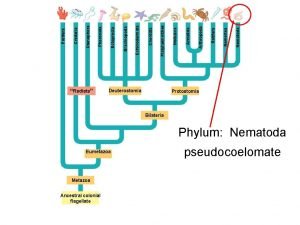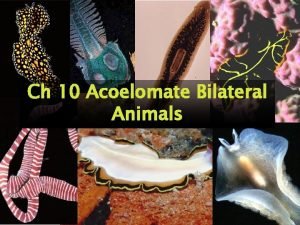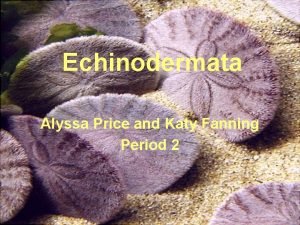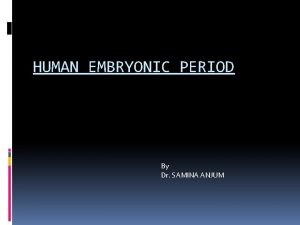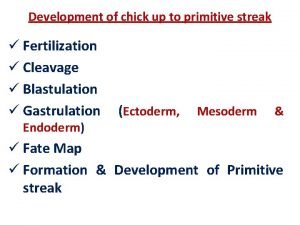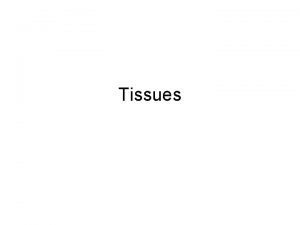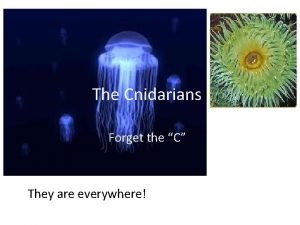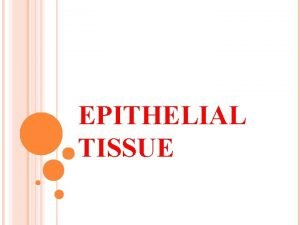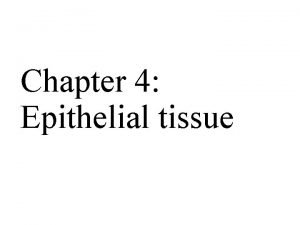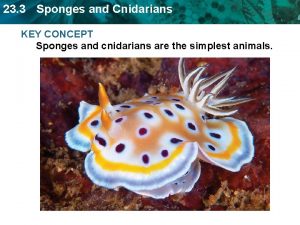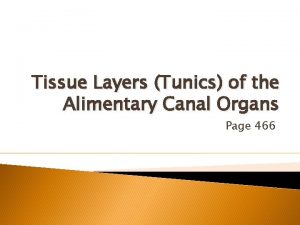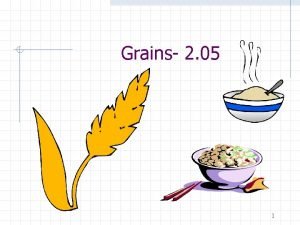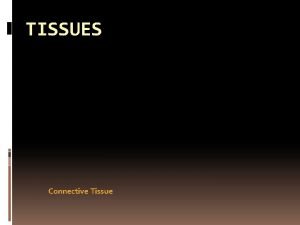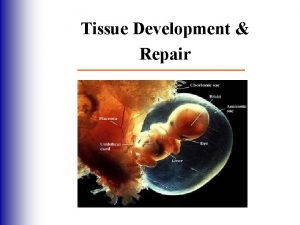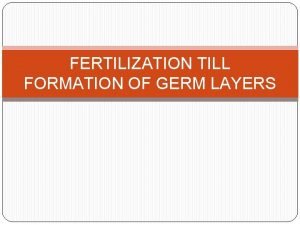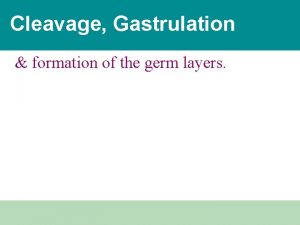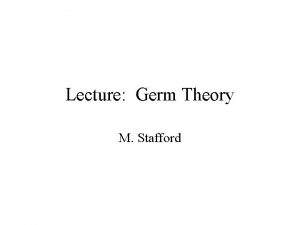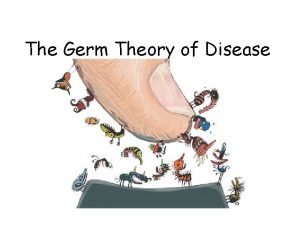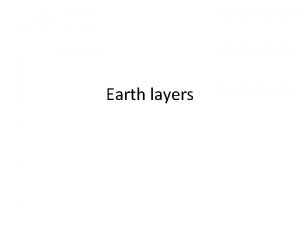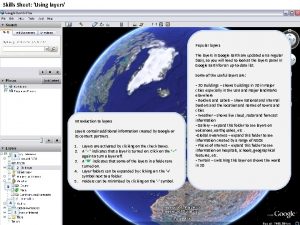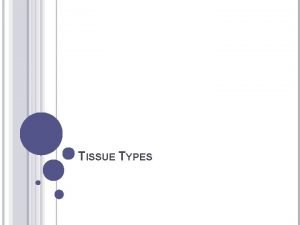Formation of Germ Layers and Early Tissue and

















- Slides: 17

Formation of Germ Layers and Early Tissue and Organ Differentiation: Third Week DR ZUBAIR

Gastrulation & primitive streak

Gastrulation • The gastrulation is the most characteristic event occurring during the third week of gestation because it forms The three germ layers that form all the tissues and organs of the body. • The process of formation of three germ layers is called gastrulation.

SUMMARY OF THE THIRD WEEK • The bilaminar embryonic disc is converted into a trilaminar embryonic disc during gastrulation. characterized by 1. Appearance of primitive streak 2. Development of notochord 3. Differentiation of three germ layers


• The first morphologic sign of gastrulation begins with formation of the primitive streak on the surface of the epiblast of the embryonic disc

GASTRULATION: FORMATION OF GERM LAYERS • As the streak elongates by addition of cells to its caudal end, its cranial end proliferates to form a • Primitive node • Primitive groove • Primitive pit.



GASTRULATION: FORMATION OF GERM LAYERS 1. Embryonic ectoderm 2. Embryonic endoderm 3. Embryonic mesoderm

GASTRULATION: FORMATION OF GERM LAYERS • As soon as the primitive streak appears, it is possible to identify the embryo's • • Craniocaudal axis, Cranial and caudal ends, Dorsal and ventral surfaces, Right and left sides.


Primitive Streak • It is a linear thickened band of ectodermal cells at the caudal end of embryo in the midline. • It becomes visible on the dorsal surface of embryonic disc on day 15 of embryonic development as a narrow groove flanked by a slight bulge on either side.

Functions of Primitive Streak • The primitive streak gives rise to following structures: • 1. Intraembryonic mesoderm • 2. Septum transversum • 3. Notochord

Fate of the Primitive Streak • The primitive streak actively forms mesoderm until the early part of the fourth week, thereafter production slows down. • The primitive streak diminishes in relative size and becomes an insignificant structure in the sacrococcygeal region of the embryo & disappears by the end of the fourth week.


Sacrococcygeal Teratoma Remnants of the primitive streak give rise to a sacrococcygeal teratoma. Because they are derived from pluripotent primitive streak cells, these tumors contain tissues derived from all three germ layers in incomplete stages of differentiation.
 Triploblasts
Triploblasts Eumetazoa
Eumetazoa Tapeworms structure
Tapeworms structure Blastocyst germ layers
Blastocyst germ layers Germ layers of echinodermata
Germ layers of echinodermata Germ layers of embryo
Germ layers of embryo Acoelomate pseudocoelomate and coelomate
Acoelomate pseudocoelomate and coelomate Germ layers
Germ layers Fate of germ layers
Fate of germ layers Layers of epithelial tissue
Layers of epithelial tissue What do you see in this picture
What do you see in this picture Ciliated columnar epithelial tissue
Ciliated columnar epithelial tissue Stratified squamous epithelium location
Stratified squamous epithelium location Cnidaria and ctenophora
Cnidaria and ctenophora Stratified squamous epithelium function
Stratified squamous epithelium function Cnidaria tissue layers
Cnidaria tissue layers Tissue layers of the alimentary canal
Tissue layers of the alimentary canal Corn minus the hull and germ
Corn minus the hull and germ

